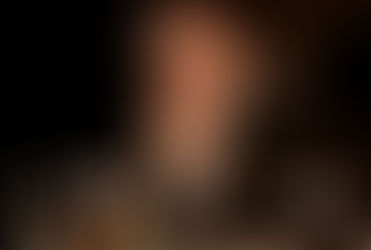Tosca
- Chris O'Rourke
- Jul 12, 2022
- 4 min read
Updated: Aug 10, 2022

Tómas Tómasson and Sinéad Campbell Wallace in INO's Tosca. Image Pat Redmond.
****
From its opening overture, Puccini's music for Tosca seethes with cinematic sweep. Like a Hollywood epic, or old time serial, it brims with tension and suspense. Except Hollywood wasn't around in 1900 when Tosca first premiered. Rather it was Puccini who would come to influence cinema's musical conventions, especially the wild heights of melodrama. Which conductor Nil Venditti and the Irish National Opera Orchestra take unbridled delight in, ensuring Irish National Opera's Tosca is a stirring, passionate production. Presented in partnership with Bord Gáis Energy Theatre.

John Molloy and Dimitri Pittas in INO's Tosca. Image Pat Redmond.
If Puccini's tale is set in 1800 during the fall of the Parthenopean Republic, Gary McCann's costumes suggests the Italian Civil War (1943-45), reinforcing old school, Hollywood stylings. Where the vain and jealous opera singer, Tosca, gets caught in a web of political intrigue. In love with artist Cavaradossi, she is unaware he is hiding escaped political prisoner Angelotti, who the vicious Baron Scarpia is ruthlessly pursing. A master manipulator, Scarpia plays on Tosca's insecurities and tricks her into locating Cavaradossi. And so the torture begins. As Tosca reveals Angelotti's whereabouts to save Cavaradossi, she's given an ultimatum by Scarpia; sleep with me or Cavaradossi dies. Proving if promises by dishonest men aren't worth the paper they're written on, an honest women proves not to be messed with. Even if, in the end, in the game of political intrigue, no one really wins.

Tómas Tómasson and chorus in INO's Tosca. Image Pat Redmond.
While Puccini's music lushly establishes mood and emotion, so structurally married is it to Giuseppe Giacosa and Victorien Sardou's libretto it almost doubles up as stage directions. Audial cues and accents work like clues, making for heightened drama at the risk of a paint by numbers engagement; telling you where, when and what precisely to feel. Creating a sense of Puccini's opera being very much the entirety of its parts, with music carrying more than its fair share of emotional weight. With several key moments taking place offstage (Angelotti's death, Tosca's performance) the layering of singing with music helps enrich onstage events, seen as belonging to a larger world pressing in. All of which Venditti brings gleefully to life.

Sinéad Campbell Wallace in INO's Tosca. Image Pat Redmond.
Under Michael Gieleta's direction, the tension between religion and art is foregrounded. McCann's set might evoke well known Roman locations, but it's a hybrid space, as much church as gallery, steeped in Ciaran Bagnall's dangerous shadows, equally towering and imposing. With church and state deviously hand in glove, religion is presented as, at best, laughably ridiculous, at worst a power hungry haven for abusers of women and children. The Te Deum sung more like a national anthem than a spiritual evocation, complimenting rather than challenging Scarpia's boasts. Yet spiritual complications occassionally enrich the experience. An angel with tarnished wings, Tosca considering self-sacrifice next to a painting of the crucified Christ, suggest something other than art as a possible refuge.

Sinéad Campbell Wallace in INO's Tosca. Image Pat Redmond.
Despite its large cast, Tosca's essence lies with its core trio. Angeletti (bass John Molloy) disappears after the first act, and Sacristan (bass Graeme Danby), police officers Spoletta (tenor Michael Bell) and Scarrione (bass-baritone Rory Dunne) whisk so quickly through they add colour rather than texture. Each doing so beautifully, along with Irish National Opera Chorus. Likewise The Children's Chorus, again adding a layer of Disney cuteness even if you're not entirely sure it fits. If tenor Dimitri Pittas' Cavaradossi has some fine moments, bass-baritone Tómas Tómasson's superb Scarpia steals the show. Like a Wehrmacht Yul Bruner channelling Ming the Merciless, Tómasson commands the stage with sinister authority, circling and prowling Tosca like prey. A villain you hate to love, because his resonant singing is impossible not to be seduced by. Yet Nazi/Russian styled military uniforms again employed for a lead villain look cliched, even if a white collar proves an effective subversion. Likewise Scarpia's trilbied henchmen, suggesting extras from Michael Jackson's Smooth Criminal.

Tómas Tómasson in INO's Tosca. Image Pat Redmond.
Then, of course, there's soprano Sinéad Campbell Wallace. Beyond vocal and acting technique something else is required. That which can spellbind an audience and make them believe. Which, in the hands of a gifted soprano like Wallace, can turn Vissi d'arte, vissi d'amor from song into prayer. From her initial coy, impetuous insecurity, to a raging fury of revenge, Wallace makes Tosca's journey utterly credible and irresistible. Wallace's sole aria subduing the audience into stunned, reverent silence, before exploding into thunderous applause at the end.

Tómas Tómasson and Sinéad Campbell Wallace in INO's Tosca. Image Pat Redmond.
There were a few opening night jitters. If Pittas seemed uncomfortable at times in the higher register, and light cues were occasionally shabby, these will hopefully resolve as the run goes on. Even so, the final scene is a pyrrhic victory. Its dampened image working too hard and taking too long to land, serving up too little in return. An end likely to leave devotees feeling short changed. But this is a rare anomaly. And curious given Gieleta's direction, up till this point, is a masterclass in staging. Under his attentive eye every action, note, and syllable contributes to Tosca's overriding success.
Tosca, by Giacomo Puccini, libretto by Giuseppe Giacosa and Victorien Sardou, presented by Irish National Opera in partnership with Bord Gáis Energy Theatre, runs at Bord Gáis Energy Theatre until July 17.
For more information, visit Irish National Opera or Bord Gáis Energy Theatre.





















